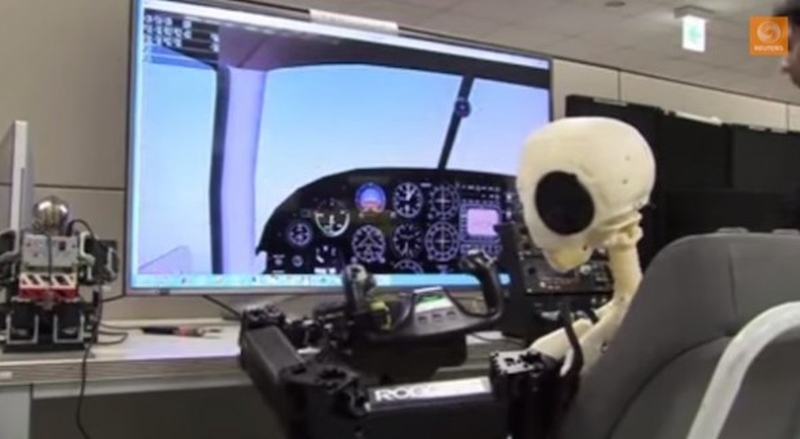OpenAI has launched GPT 5.2, a major model upgrade now available in both the API and ChatGPT. It is described as the company’s most…
Humanoid robots will someday fly our planes

Pibot is the first ever humanoid robot designed to fly a plane autonomously. Researchers at South Korea’s Advanced Institute of Science and Technology responsible for developing Pibot hope their robot will offer several advantages over drones when it comes to dangerous missions that require the control of larger rescue aircraft.
Although autonomous drones are good at providing surveillance and air support during warfare, lead researcher Shim Hyung-Chul explains that robots are needed to fly a variety of existing aircraft specific to any number of dangerous situations, the most notable being the Fukushima tragedy in Japan: “When Japan’s Fukushima nuclear plant got damaged by an earthquake in 2011, there was a helicopter which was trying to spray extinguishing agents, but it couldn’t get close to the site because of the radiation hazard.”
Pibot is a humanoid robot to the fullest extent, with arms, legs, head and eyes. The robot is able to manipulate a plane’s control deck and is interfaced with the plane’s sensors to fulfill all the functions of a real pilot. Pibot is also equipped with real-time computer vision to direct a plane during take-off and landing.
Currently, Pibot and its smaller cousin have demonstrated the ability to navigate planes on a flight simulator, and more recently using toy planes. In the near future, researchers are hoping to test Pibot’s abilities in a full-sized plane.
Pibot is the first ever humanoid robot designed to fly a plane autonomously. Researchers at South Korea’s Advanced Institute of Science and Technology responsible for developing Pibot hope their robot will offer several advantages over drones when it comes to dangerous missions that require the control of larger rescue aircraft.
Although autonomous drones are good at providing surveillance and air support during warfare, lead researcher Shim Hyung-Chul explains that robots are needed to fly a variety of existing aircraft specific to any number of dangerous situations, the most notable being the Fukushima tragedy in Japan: “When Japan’s Fukushima nuclear plant got damaged by an earthquake in 2011, there was a helicopter which was trying to spray extinguishing agents, but it couldn’t get close to the site because of the radiation hazard.”
Pibot is a humanoid robot to the fullest extent, with arms, legs, head and eyes. The robot is able to manipulate a plane’s control deck and is interfaced with the plane’s sensors to fulfill all the functions of a real pilot. Pibot is also equipped with real-time computer vision to direct a plane during take-off and landing.
Currently, Pibot and its smaller cousin have demonstrated the ability to navigate planes on a flight simulator, and more recently using toy planes. In the near future, researchers are hoping to test Pibot’s abilities in a full-sized plane.
In the following video, researchers demonstrate how a smaller version of the Pibot, at 9.7cm (15.6in) tall, sits inside the cockpit of a smaller, modified toy plane and maneuvers the plane to dive, roll, and zip through the skies.
While still in their humanoid flying infancy, and based on these impressive video demonstrations, it’s easy to envision perfected versions of these humanoid robots replacing pilots and flying all kinds of commercial and military grade aircraft. As these humanoid pilots become more common, it’ll be interested to see how they will be regulated and how the public will react to the prospect of humanoid-controlled commercial aviation. Hmm…
Article originally published on TechGenMag


